The search for balance lies at the heart of modern living. In our homes, particularly within the living room, we seek harmony between aesthetic beauty and practical utility—a space that both pleases the eye and supports our daily rhythms.
Modern living room furniture embodies this delicate balance through clean lines, thoughtful materials, and an emphasis on both visual lightness and physical comfort. As a space where we gather, rest, and engage with others, the living room deserves careful consideration in its furnishing. Let me guide you through 22 essential pieces that capture the essence of contemporary design while creating a space that feels deeply personal.
1. Low-Profile Sectional Sofa
The foundation of any modern living room begins with seating, and a low-profile sectional creates an immediate sense of sophisticated comfort. These pieces sit closer to the floor, typically 15-18 inches in height, with clean horizontal lines that draw the eye across the space rather than interrupting it. The visual effect is one of openness and calm—qualities highly prized in contemporary design.
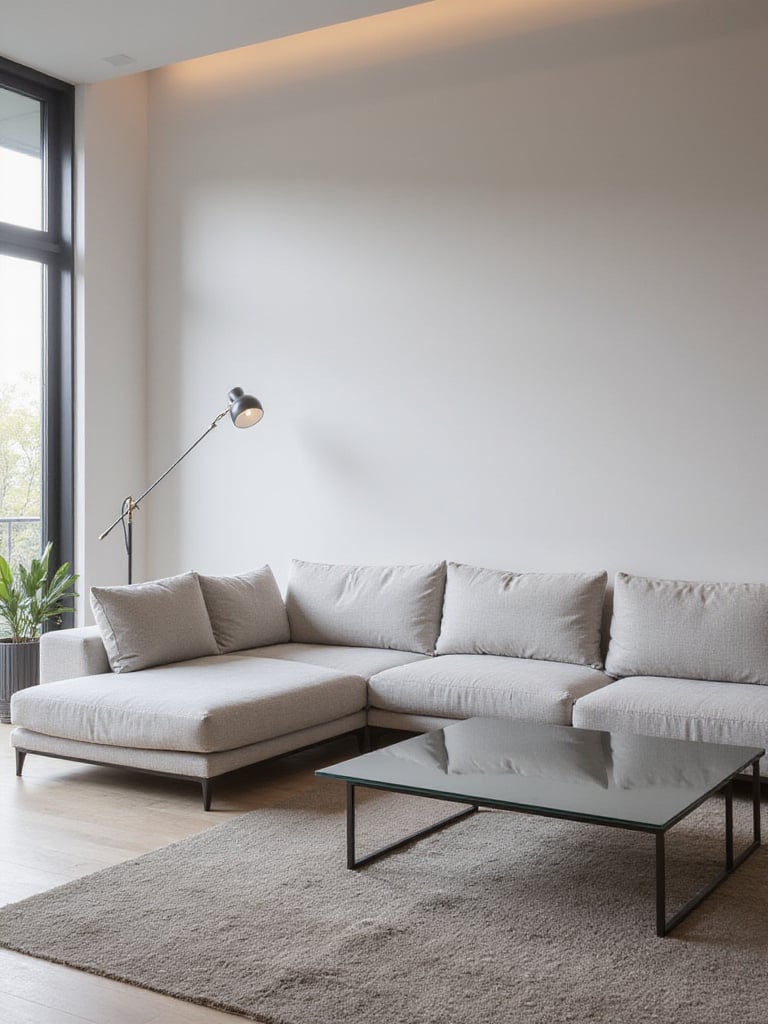
What makes these sectionals particularly valuable is their adaptability. Many feature modular components that can be rearranged as your needs change, while their minimal aesthetic allows them to serve as a canvas for more expressive accessories. Consider options with built-in technology integration like USB ports for a seamlessly modern experience.
The inspiration for this collection struck when designers began recognizing our dual needs for gathering spaces and personal retreats within the same furniture piece—a sectional offers both communal and individual comfort.
2. Geometric Accent Chair
Where your sectional provides the foundation, a geometric accent chair introduces character and visual tension. These chairs celebrate angular forms, clean lines, and distinct shapes that function as sculptural elements within your space. Materials range from warm woods to cool metals, often with upholstery that either complements or boldly contrasts with your primary seating.
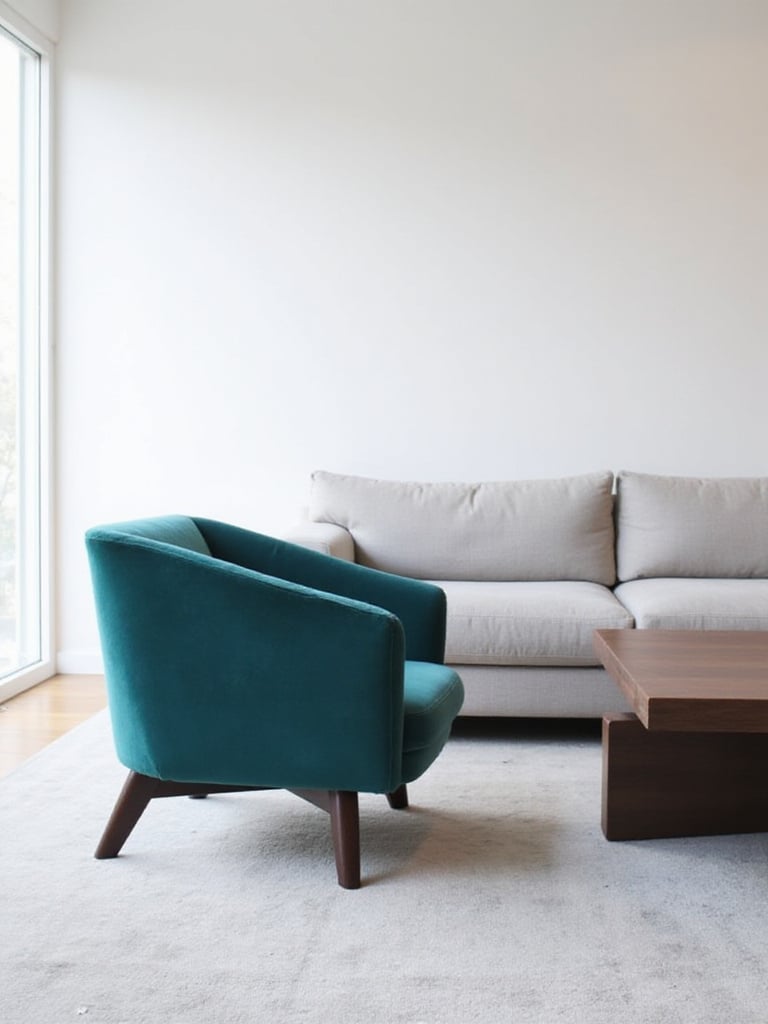
The beauty of a geometric chair extends beyond its form—it creates a focal point that draws attention and invites conversation. Place it where light can emphasize its distinctive silhouette, perhaps angled toward your main seating to create a natural conversation area. The chair should feel like a deliberate artistic choice rather than merely additional seating.
The designer’s attention to detail shows in how these chairs balance visual weight with actual comfort—the best examples sacrifice neither form nor function.
3. Minimalist Coffee Table
A minimalist coffee table anchors your seating arrangement while maintaining visual breathing room. The hallmark of these tables is their emphasis on honest materials and clean forms—think clear glass tops on slim metal frames, solid wood slabs with subtle grain patterns, or polished concrete with softened edges.
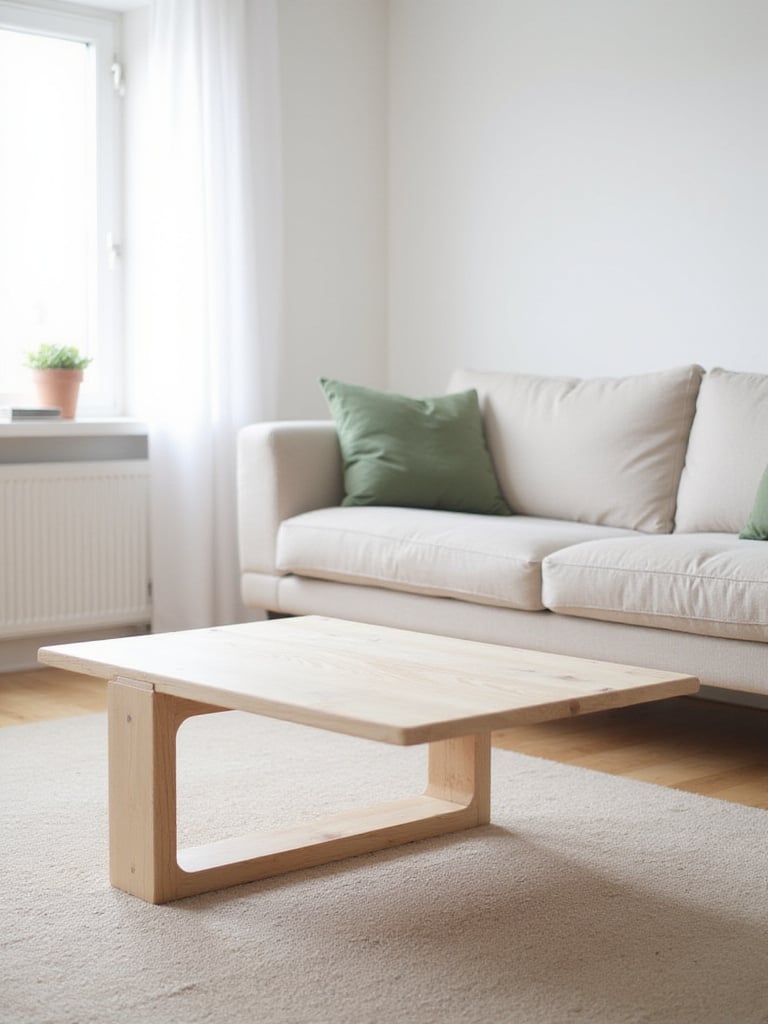
What distinguishes truly exceptional minimalist tables is their thoughtful proportions. The height should allow comfortable access from your seating while maintaining proper scale with surrounding pieces. Many contemporary designs incorporate subtle functionality like hidden storage compartments or adjustable surfaces without compromising their clean aesthetic.
What makes this design special is the way it creates a necessary surface for daily life while maintaining the sense of openness that defines modern living room furniture.
4. Architectural Floor Lamp
Light shapes our experience of space, and an architectural floor lamp brings both illumination and sculptural presence to your living room. Unlike traditional lamps, these pieces draw inspiration from structural elements—cantilevered arms, counterweighted bases, articulating joints—creating forms that are as visually compelling when unlit as when illuminated.
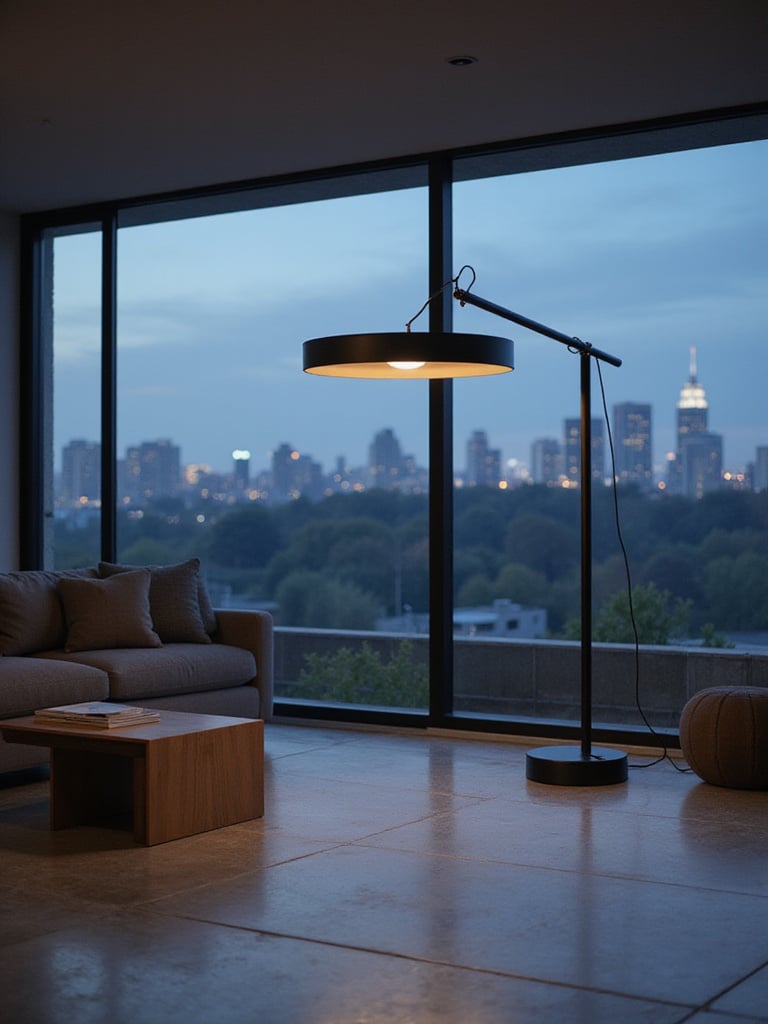
The most sophisticated examples balance technical precision with organic warmth. Consider materials that complement your existing furniture—brass details can warm a cool palette, while matte black finishes create dramatic silhouettes. Position these lamps where they can cast light in layers, highlighting textures and creating depth within the room.
The silhouette draws inspiration from industrial design principles, where function dictates form and unnecessary elements are eliminated, creating lighting that feels both essential and elevated.
5. Floating Media Console
The evolution of entertainment technology demands storage solutions that are equally advanced. Floating media consoles answer this need by combining sleek design with practical functionality. Mounted directly to the wall without visible supports, these pieces create an impression of lightness while providing substantial storage for components and media.
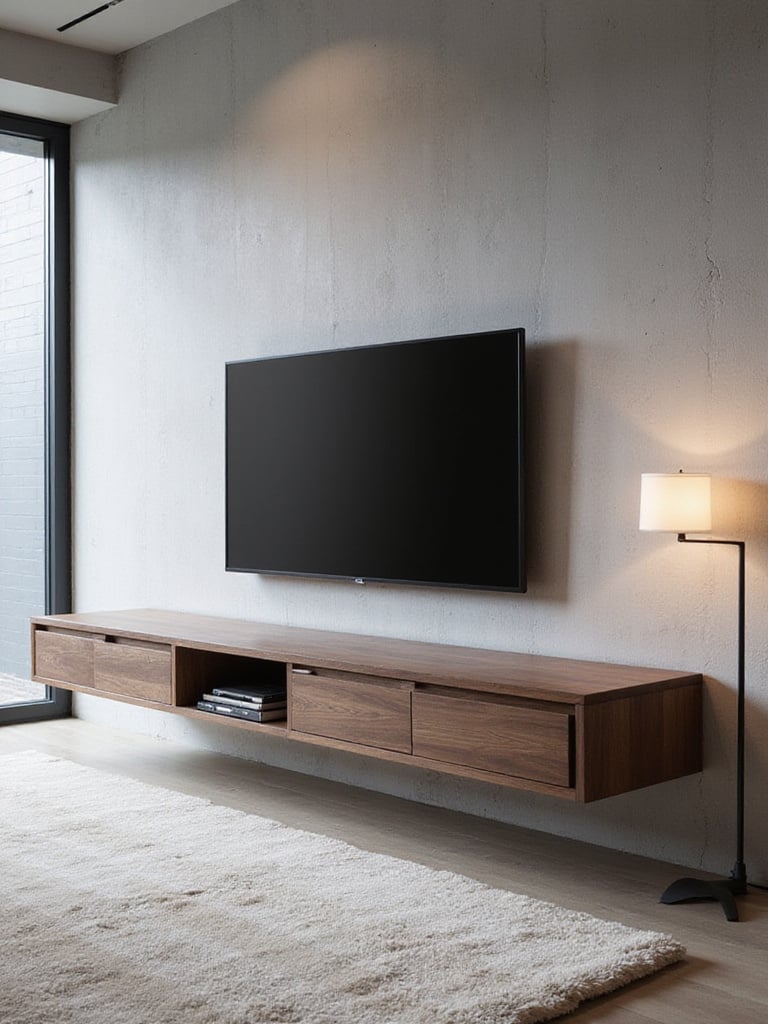
When selecting a floating console, consider both your technical needs and aesthetic preferences. Look for thoughtful cable management systems, adjustable shelving, and materials that complement your overall design scheme. The width should generally exceed your television’s by several inches on each side to create visual balance.
The unexpected environmental benefit comes from the floor space these consoles preserve, making cleaning easier while creating a more spacious feeling in your modern living room furniture arrangement.
6. Sculptural Side Table
The humble side table transforms into an artistic statement when given sculptural form. These small-scale pieces punch above their weight visually, often becoming conversation pieces despite their modest size. Look for unexpected materials—live-edge wood, hammered metals, cast resin—and forms that challenge conventional table shapes.
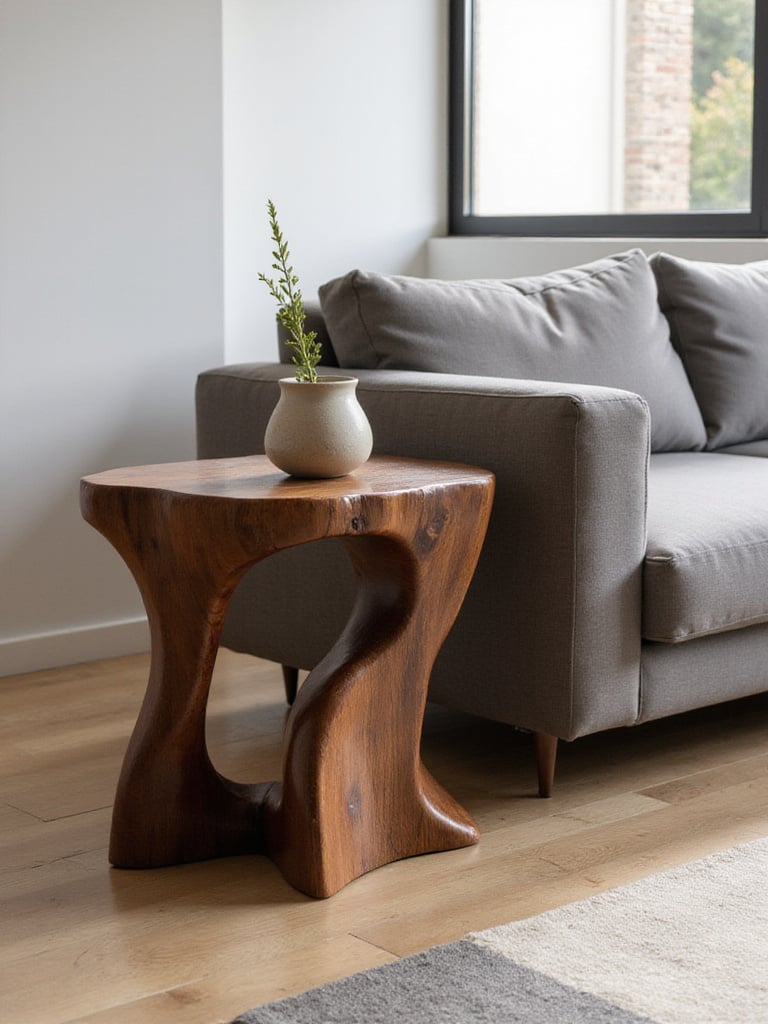
Placement is key to maximizing their impact. Position sculptural side tables where they receive good light and can be viewed from multiple angles. Consider how they complement nearby larger pieces—a rounded organic form might balance a rectilinear sofa, while a geometric piece could echo shapes found elsewhere in your design scheme.
The craftsmanship reveals itself in details like hand-finished surfaces, precision joinery, or the thoughtful integration of different materials that elevate these small pieces into functional art.
7. Abstract Area Rug
The floor presents one of the largest design opportunities in any room, and an abstract area rug transforms this surface into a foundation for your entire design scheme. These rugs introduce color, texture, and movement through non-representational patterns that feel distinctly contemporary.
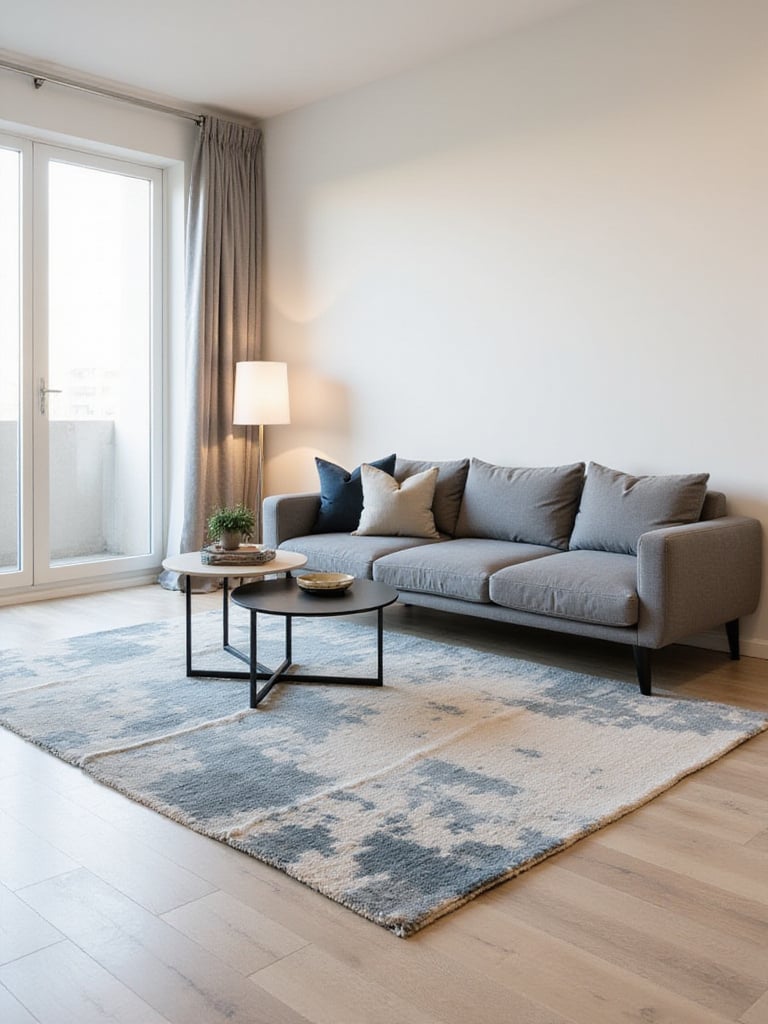
When selecting an abstract rug, consider both practical and aesthetic factors. High-quality wool offers durability and natural stain resistance, while materials like viscose provide silky sheen but require more careful maintenance. Size matters tremendously—the rug should either accommodate all furniture legs or none of them, creating clear visual boundaries.
The unexpected color story emerging this year embraces subtle tonal variations rather than high contrast, allowing these rugs to unify modern living room furniture while adding depth and dimension to the floor plane.
8. Versatile Ottoman or Pouf
Few pieces of modern living room furniture offer the flexibility of an ottoman or pouf. These chameleon-like elements transition effortlessly between roles—footrest, occasional seating, impromptu table (with the addition of a tray), or purely decorative accent. Their smaller scale makes them easy to reposition as needs change.
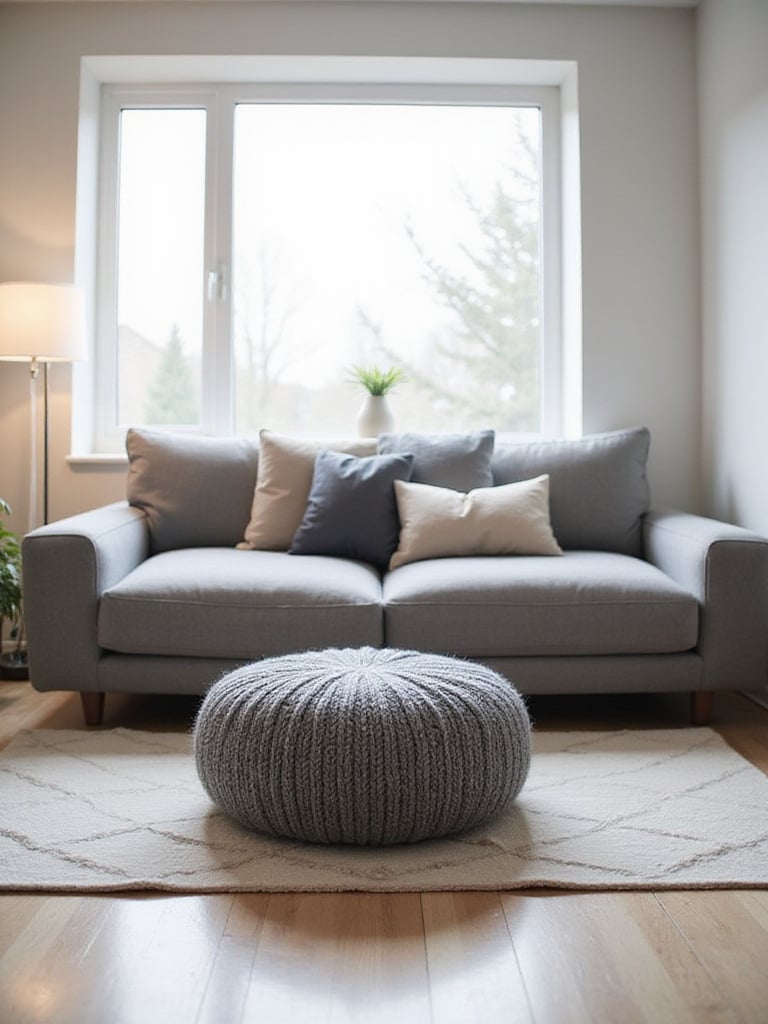
Consider both form and function when selecting these pieces. Upholstered options in textural fabrics add softness to rooms dominated by hard surfaces, while leather develops beautiful patina over time. For maximum versatility, choose a firm construction that provides stable support whether used for seating or as a surface.
The versatility reveals itself when you pair this with different furniture arrangements—floating between seating groups, tucked beside a reading chair, or clustered to create casual conversation areas.
9. Open Shelving Unit
The shift toward open shelving reflects our modern desire to display rather than hide our possessions. These units provide structure without solidity, creating visual divisions while maintaining the flow of light and sight lines. The best examples balance negative and positive space, creating frameworks that showcase your collections without overwhelming them.

Material choice significantly impacts the character of open shelving. Metal frameworks convey industrial precision, while wood brings natural warmth. Consider how the shelving will interact with your wall color—light shelves against dark walls create dramatic contrast, while tone-on-tone approaches feel more subtle and sophisticated.
Unlike conventional options, this approach reduces visual weight while maximizing storage and display opportunities, making it ideal for modern living room furniture collections that prioritize openness.
10. Statement Daybed or Chaise
The daybed or chaise represents luxury in its most accessible form—an invitation to recline, relax, and linger. In modern contexts, these pieces shed their traditional associations, embracing clean lines and architectural forms while maintaining their inherent comfort.
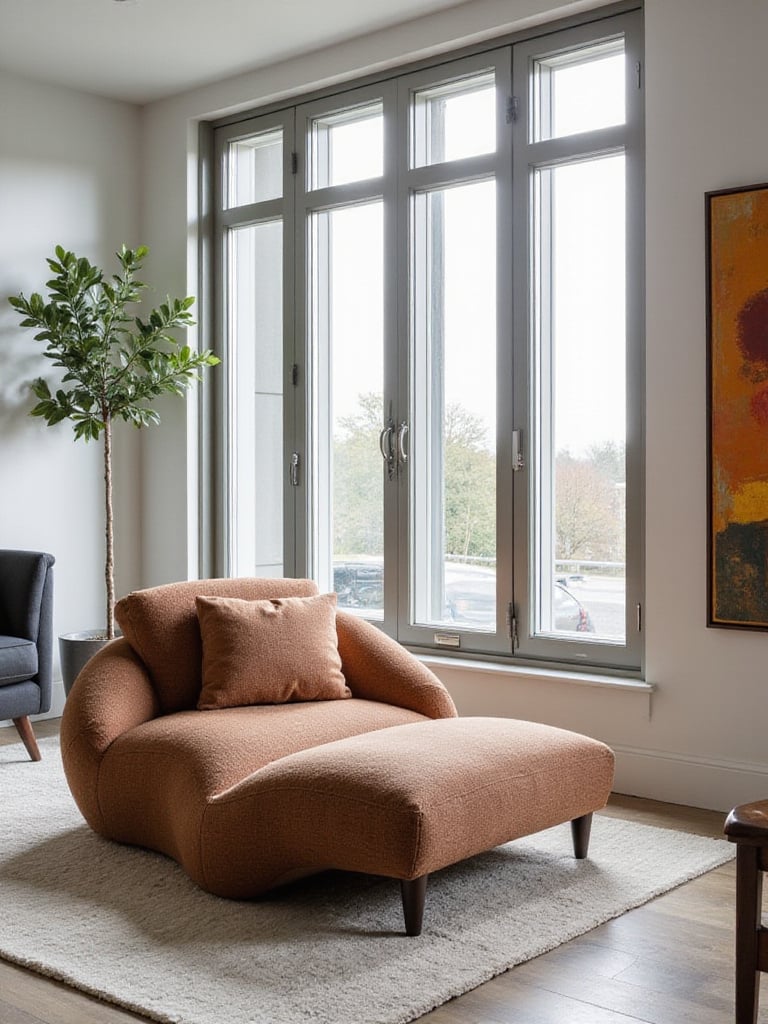
Position your daybed or chaise where it can serve as both functional seating and visual anchor. Near windows, it becomes a contemplative spot for reading; in open-plan spaces, it can define boundaries between living zones. The most successful examples balance substantial presence with visual lightness—floating on slim legs or cantilevered bases.
The cultural heritage preserved in each piece includes centuries of design evolution, from ancient Greek klinē to Bauhaus innovation, reimagined for contemporary living spaces.
11. Console Table
The console table occupies a special place in modern living room furniture arrangements, often serving as a transitional element between spaces. Behind a sofa, it provides a surface for lighting and display while creating a finished look. In entryways or along walls, it offers both functional surface and display opportunities.

Proportions matter tremendously with console tables—height should complement adjacent seating, while length should feel intentional rather than arbitrary. Consider how the table will be viewed from different angles; many modern designs feature interesting details visible from both front and back, acknowledging their often central placement.
Running your hand across this material reveals subtle textures and temperature variations that add sensory richness to what might otherwise be a purely visual experience.
12. Textured Accent Pillows
Texture brings living rooms to life, and accent pillows offer the most accessible way to introduce tactile variation. In modern contexts, look beyond expected patterns toward dimensional textures—bouclé fabrics, chunky weaves, pleated surfaces, or subtle embroidery that rewards close inspection.
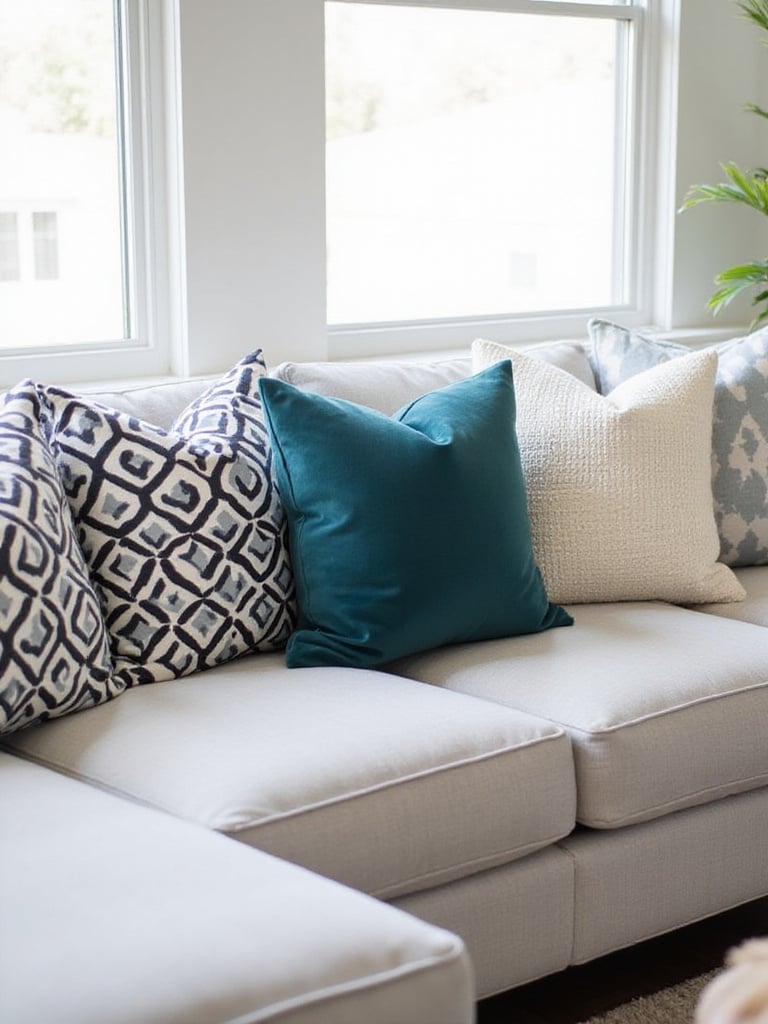
Creating a cohesive collection requires balance between unity and variety. Consider working within a restricted color palette while varying textures significantly, or maintaining similar textures while introducing careful color variation. Limit yourself to an odd number of pillows—three or five for a standard sofa—to create visual rhythm.
“Texture is to touch what color is to sight—it adds dimension to experience that cannot be achieved through any other means.”
The interplay between the colors creates a visual conversation that can either calm or energize your modern living room furniture arrangement, depending on your selection.
13. Luxurious Throw Blanket
A thoughtfully chosen throw blanket introduces warmth—both literal and figurative—to modern living spaces. Unlike more structured elements of modern living room furniture, throws bring softness and casual drape, creating visual relief from rigid forms. They invite touch and interaction, making spaces feel immediately more livable.
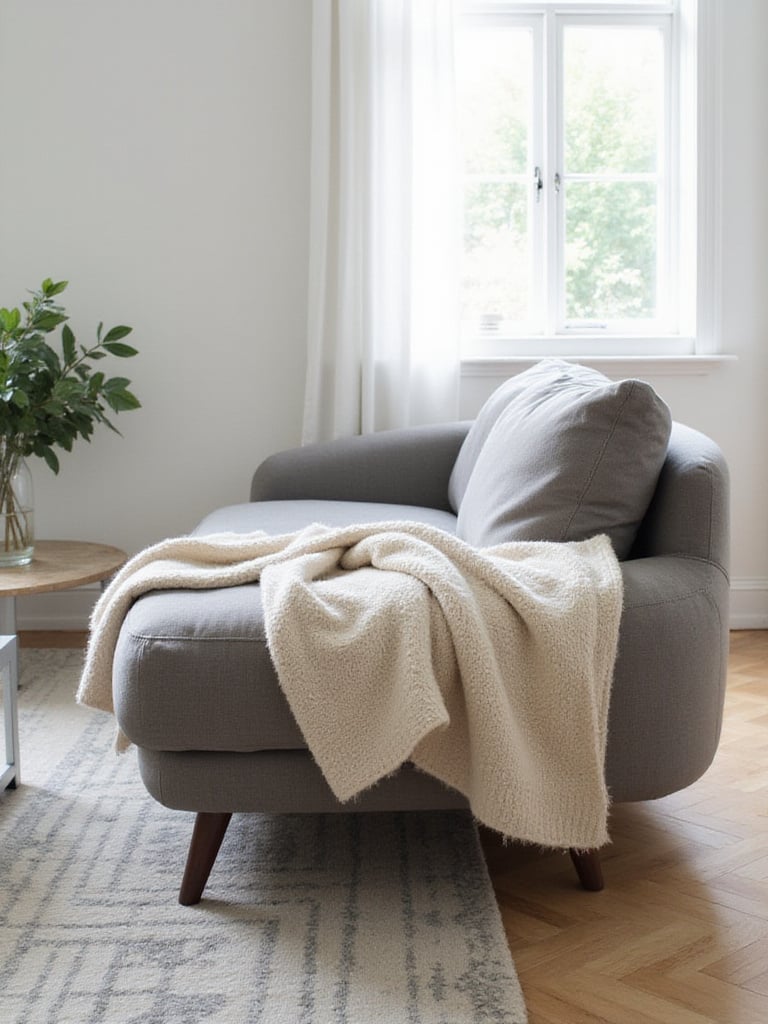
Material selection dramatically impacts both appearance and experience. Cashmere and merino wool offer unparalleled softness and temperature regulation, while high-quality cotton provides machine-washable practicality. Consider weight as well as texture—a substantial throw creates different visual impact than a lightweight one, regardless of material.
The material sourcing makes all the difference in how these pieces feel against the skin and how they drape across furniture—elements that transform them from mere accessories to essential components of comfort.
14. Contemporary Wall Art
Wall art provides the most direct expression of personality within a living space. Contemporary pieces—whether paintings, prints, photography, or mixed media—create focal points that draw the eye and establish color relationships that can inform the entire room’s palette.
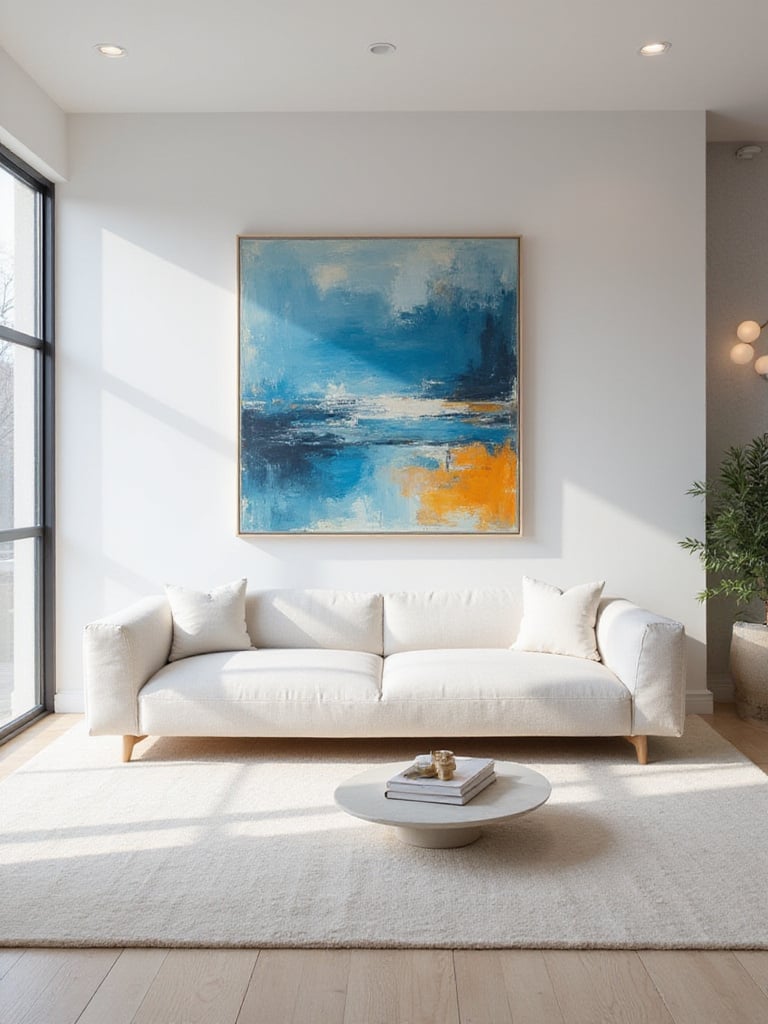
Scale and placement deserve careful consideration. Undersized art often feels tentative and unintentional, while properly scaled pieces create presence and confidence. Position art at eye level (typically center points at 57-60 inches from the floor) and ensure adequate breathing room around each piece to allow proper visual appreciation.
The emotional response this evokes begins with the immediate visual impact but develops deeper resonance through daily viewing—art becomes part of your environmental experience rather than merely decoration.
15. Minimalist Decorative Objects
The objects we choose to display reveal our values and interests. In modern contexts, minimalist decorative objects emphasize quality over quantity, material integrity over ornamentation. Each piece should earn its place through either beauty or meaning—ideally both.
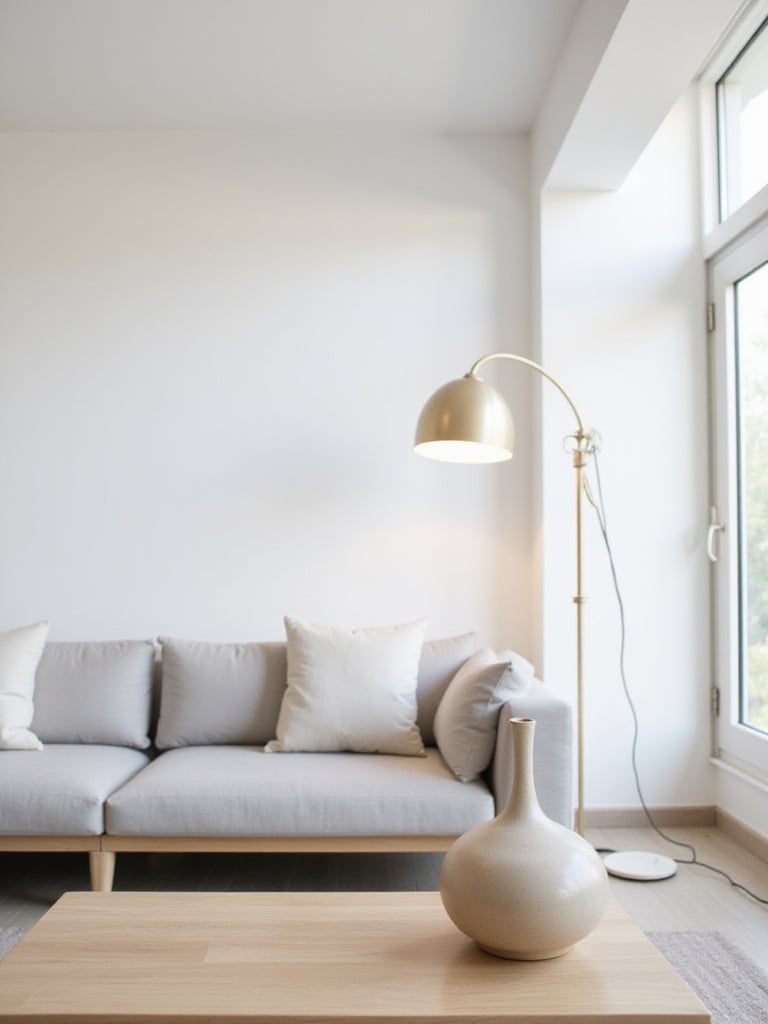
Consider creating small curated groupings rather than scattered individual pieces. Arrange objects in odd-numbered collections, varying heights and volumes while maintaining some connecting element—similar materials, complementary forms, or related color tones. Allow negative space around these groupings to prevent visual clutter.
Beyond aesthetics, the ecological impact matters because thoughtfully selected objects tend to remain with us longer, reducing the cycle of consumption and disposal that characterizes less considered decorating approaches.
16. Storage Cabinet or Credenza
Modern living demands storage solutions that conceal the inevitable accumulation of possessions while contributing to overall aesthetic harmony. A well-designed storage cabinet or credenza accomplishes this dual purpose, providing practical organization behind a beautiful exterior.
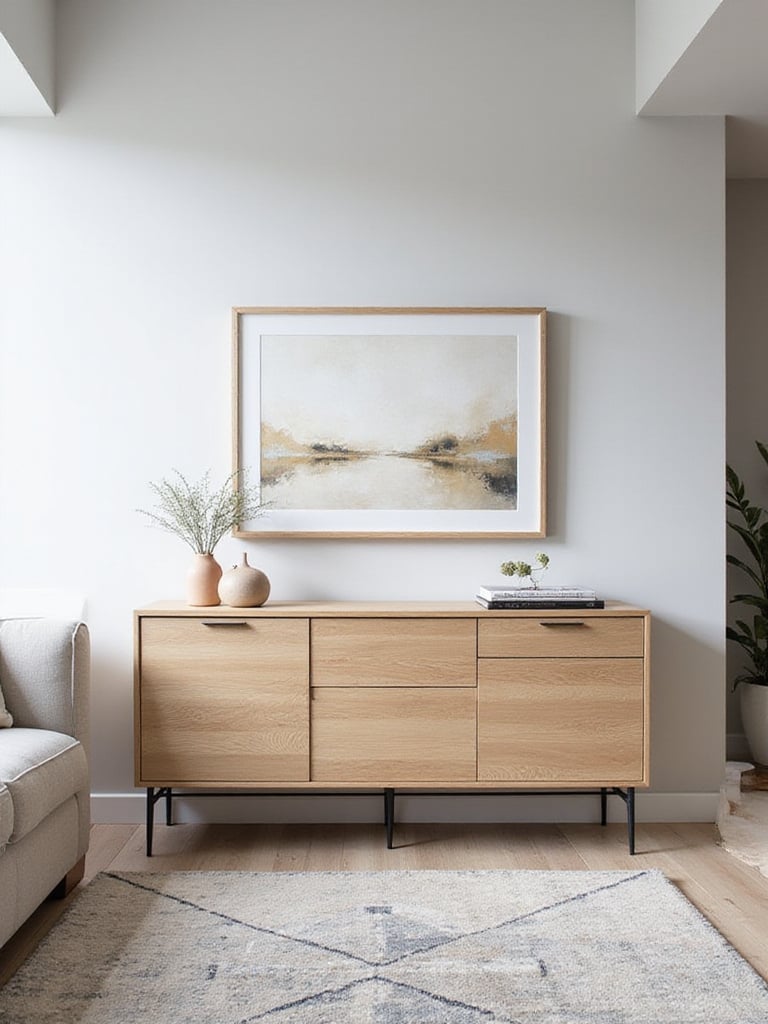
Look for pieces that offer a balance of open and closed storage—drawers and cabinets for items best kept hidden, shelves for displaying selected objects. Hardware details matter tremendously in modern design; many contemporary pieces feature integrated pulls, push-latch mechanisms, or cleverly concealed hardware that maintains clean lines.
The quality becomes evident after years of use when well-crafted pieces maintain their functionality and appearance while lesser options begin to show wear at hinges, drawer slides, and other stress points.
17. Metallic or Glass Bar Cart
The return of the bar cart represents our renewed appreciation for ritual and hospitality. These mobile elements introduce both function and reflective surfaces that animate spaces with movement and light. In modern living room furniture collections, they offer a touch of glamour without excess.
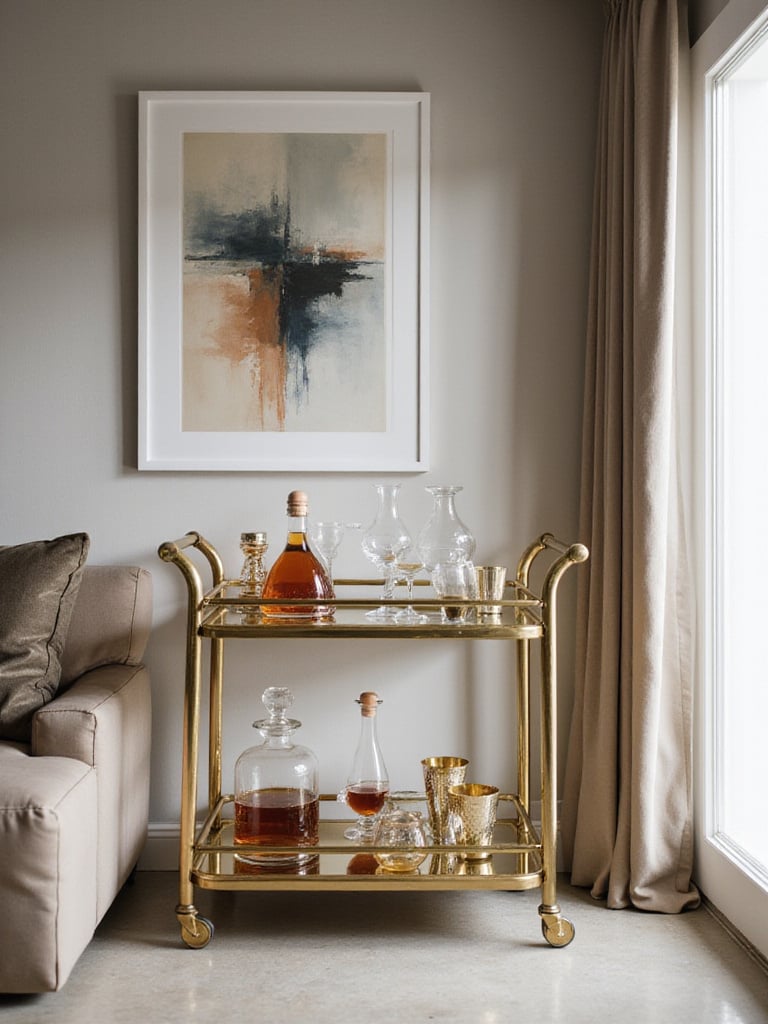
Material selection defines the character of these pieces—brass and gold tones bring warmth and vintage references, while chrome and nickel create cooler, more contemporary impressions. Glass shelves maintain visual lightness. Consider scale carefully; oversized carts can dominate smaller spaces, while undersized versions may appear insubstantial.
After months of sourcing and curation, designers have reinterpreted this mid-century staple for contemporary homes, balancing nostalgic appeal with fresh functionality.
18. Modern Room Divider
As living spaces become increasingly open and multifunctional, room dividers have evolved from practical necessities to design features. Modern interpretations use slatted wood, perforated metal, textured glass, or tensioned fabric to create visual separation without blocking light or air flow.
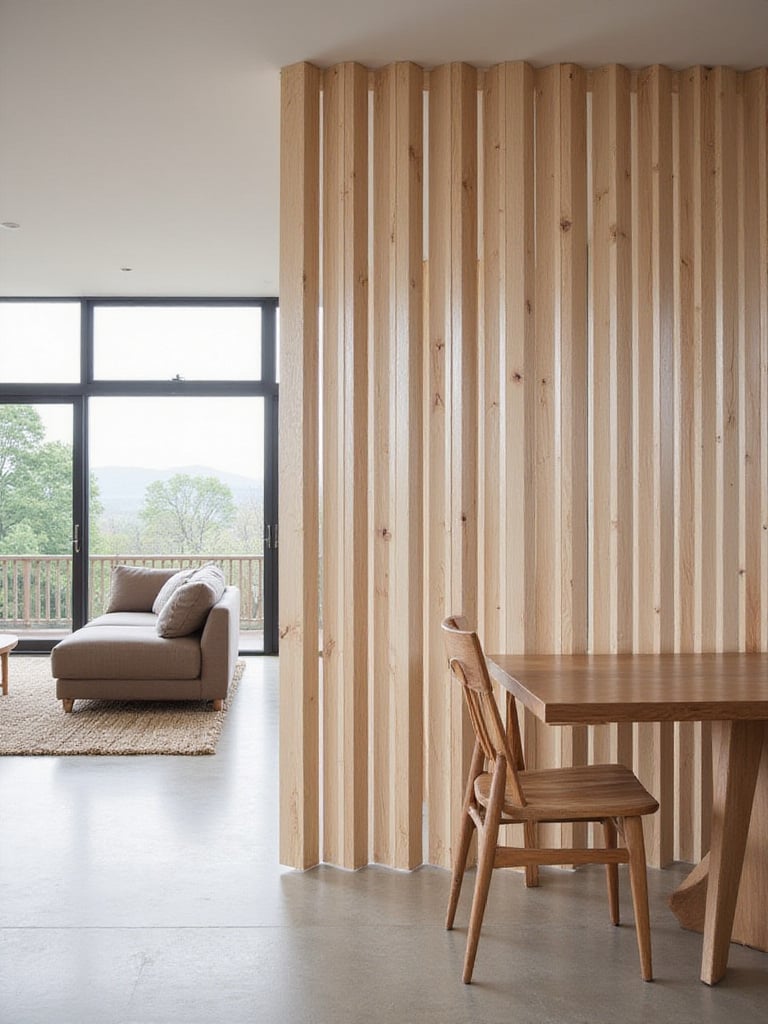
The most successful dividers acknowledge their dual nature as both architecture and furniture. They should appear intentional and integrated rather than temporary or makeshift. Consider how they look from all angles—many contemporary designs feature different appearances from each side, acknowledging their three-dimensional presence in space.
The challenge of awkward spaces becomes easier when you introduce elements that create definition without confinement, allowing modern living room furniture arrangements to breathe while maintaining distinct functional zones.
19. Clean-Lined Bench
The bench offers an architectural approach to seating—linear, low, and visually quiet. In modern living room furniture arrangements, benches provide occasional seating without the visual weight of additional armchairs. Their horizontal emphasis reinforces the contemporary preference for strong directional lines.
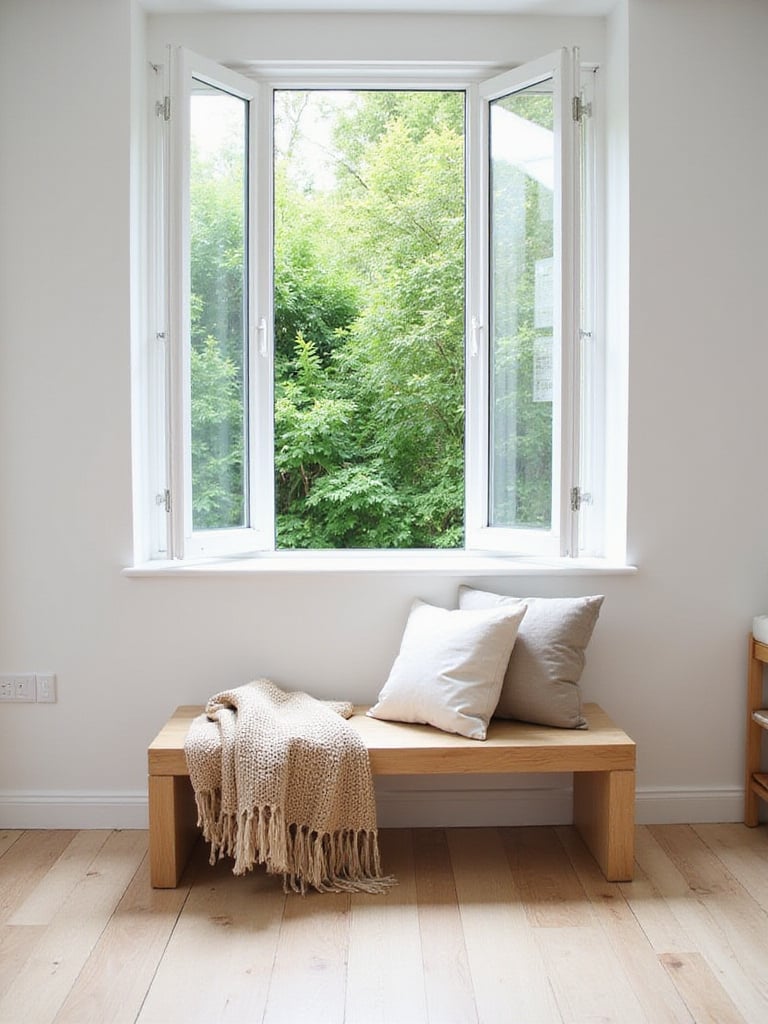
Placement options are numerous: beneath windows, behind sofas, along walls, or even floating in space as room dividers. Consider how the bench complements surrounding pieces—materials should either intentionally match or deliberately contrast with nearby furniture to create visual relationships.
When clients ask us about balancing style with comfort, I often suggest incorporating benches with slim cushions that maintain clean lines while providing adequate support for short-term seating.
20. Sculptural Table Lamp
Lighting shapes our perception of space and color, and sculptural table lamps deliver illumination through forms that remain compelling even when unlit. Unlike purely functional lighting, these pieces serve as sculptural objects that contribute to your room’s composition throughout the day.

Base materials range from ceramic and stone to metal and glass, while shades might be traditional fabric forms or integrated elements of the overall design. Consider how the lamp’s form complements your other modern living room furniture—organic shapes can soften angular furniture arrangements, while geometric lamps might reinforce existing architectural elements.
The artisan collective that creates these pieces often approaches lighting as functional sculpture rather than merely decorative objects, resulting in pieces that transform both your space and your experience of it.
21. Custom Built-In Furniture
The ultimate expression of intentional design, custom built-ins transform architectural challenges into opportunities. These pieces respond directly to your space’s specific dimensions and your personal needs, creating solutions impossible to achieve with freestanding furniture.

Modern interpretations of built-ins emphasize clean lines, flush surfaces, and thoughtful integration with architecture. Consider incorporating hidden lighting, precisely fitted storage, and materials that complement your home’s existing finishes. While the investment exceeds that of ready-made pieces, the results offer unmatched functionality and aesthetic integration.
If you’ve struggled with similar rooms before, custom solutions might address the specific challenges that have made standard furniture arrangements unsatisfactory in your space.
22. Reconfigurable Modular Seating
The dynamic nature of contemporary life demands furniture with equal flexibility. Reconfigurable modular seating systems allow spaces to transform as needs change—from intimate conversation arrangements to expansive seating for gatherings, or even separate pieces distributed throughout a space.

Look for systems with intuitive connection mechanisms, consistent seat heights across components, and durable upholstery that will maintain its appearance through multiple reconfigurations. Consider how different arrangements might work within your space, and ensure you have adequate room to experiment with various configurations.
While designed for the living room, we’ve seen creative uses in home offices, media rooms, and even outdoor spaces, demonstrating the adaptability that makes these systems so valuable in contemporary homes.
Conclusion
The modern living room represents our most personal expression of how we want to live—balancing aesthetic desires with practical needs, creating spaces that support both solitude and connection. Through thoughtful selection of these 22 essential pieces, you can create a space that feels both timeless and contemporary, reflecting your unique perspective while embracing the principles that define modern design.
Remember that the most successful modern living rooms evolve gradually, accumulating pieces that resonate personally rather than following formulaic approaches. Allow yourself time to discover items that speak to you, and don’t hesitate to combine unexpected elements—the tension between different styles and periods often creates the most interesting and livable spaces.
As you curate your modern living room furniture collection, let function guide your choices while allowing beauty to elevate the everyday experience of your most-used space. The result will be a room that not only looks contemporary but truly supports contemporary living.






